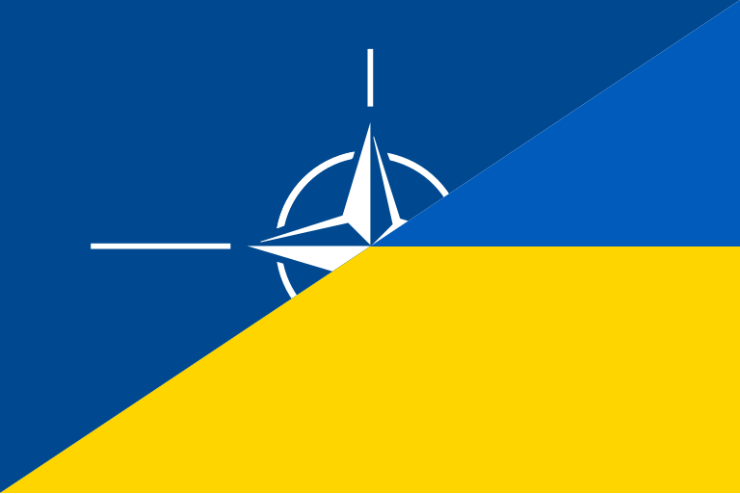In his latest interview for Serbia’s top-rated Happy TV channel, Dr. Trifkovic dwells on the prospects of a major offensive by the armed forces of Ukraine and discusses the danger of subsequent escalation between NATO and Russia.
[Interview transcript below, translated from Serbian and abbreviated.]
ST: The Western media are extensively reporting and speculating on the much anticipated Ukrainian counteroffensive. I think that [Ukrainian President Volodymyr] Zelensky is under a great deal of political pressure. On the success of this counteroffensive will depend the political readiness of the collective West to continue supplying him with tens of billions worth of advanced weaponry, including the tanks which are on their way and F-16s which will be coming in the fall. The question remains whether and at what moment this offensive will start in earnest. If we look at the battlefield in southeastern Ukraine, the most likely scenario would be for the Ukrainians to try to cut the land bridge which connects the Donbas with the Crimea, specifically at Mariupol, which was the scene of heavy fighting last year. Another sign that a counteroffensive may be near is the explosion that damaged the Nova Kakhovka dam on the Dnieper. That reservoir is the source of water for the Crimean Peninsula, and the flooding downstream will make all movement difficult in the affected area.
What I find both intriguing and difficult to explain is that on the whole the Russians have adopted a defensive strategy. Since the fall of Bakhmut over two weeks ago we have not seen any movement of Russian forces. Furthermore, the Wagner Group’s boss [Yevgeny] Prigozhin has denounced the regular Russian army for losing the village of Berkhovka, north of Bakhmut, which had been previously taken by his Wagner fighters with considerable losses. Satellite shots clearly indicate that the Russians are intensely fortifying the entire long front line with bunkers, dragons’ teeth to stop tanks, and minefields. It is impossible to win wars by remaining on the defensive. It would be surprising if the Russians limit themselves to keeping what they control now, which is just 18 percent of the territory of Ukraine. That would mean that they would not try even to take the rest of the Donetsk Region [oblast], let alone all four regions which they formally annexed last fall, including Kherson and Zaporozhya.
If the Ukrainians launch a major counteroffensive in which the Russians suffer significant casualties and further territorial losses, that could have serious repercussions inside Russia itself. On the other hand, for the Ukrainian forces this will be all-or-nothing because they will probably lack the strength to try attacking more than once. They have the problem of logistics, using five to six thousand artillery rounds a day, and let us remember that before this conflict the total production of artillery rounds in the U.S. was fifteen thousand a month. The Ukrainian armed forces now have 60,000 new soldiers in 12 brigades who have been trained and equipped to NATO standards in Great Britain, Poland and other NATO member countries. If they deploy those forces and the offensive nevertheless runs out of steam, then there will be a great danger of escalation. The hawks, such as the U.S. Under-Secretary of State Vicotia Nuland, will start clamoring for the direct engagement of NATO forces. That, of course, would radically escalate the conflict with potentially far-reaching consequences.
Q: Is a direct confrontation between NATO and Russia possible?
ST: It is possible, of course, which is why I mention the danger of escalation, especially if the Ukrainians suffer reverses. We can already hear some voices, primarily among the neoconservatives in Washington who are habitually bellicose, that after such a major investment in Ukraine the West cannot afford the luxury of letting the Russians prevail. But in their vocabulary Russia will “prevail” not if it advances to the Dnieper, or occupies Nikolaev, Odessa, or the Danube delta. No, to them Russia will “prevail” if it manages to hold on to what it currently controls. For starters, furthermore, some Polish sources indicate the possibility of engaging “volunteers” to fight in Ukraine. That would mean Polish or Lithuanian or some other NATO country sending soldiers, formally not as regular servicemen but as ostensible volunteers. That was the formula used by the Chinese to attack the Americans across the Yalu River during the Korean War in 1950. Imagine: one million volunteers! But this would be the next possible stage of confrontation, and those contingents would be composed probably of soldiers from NATO’s eastern wing, from the three Baltic republics, Poland and Romania.

Leave a Reply